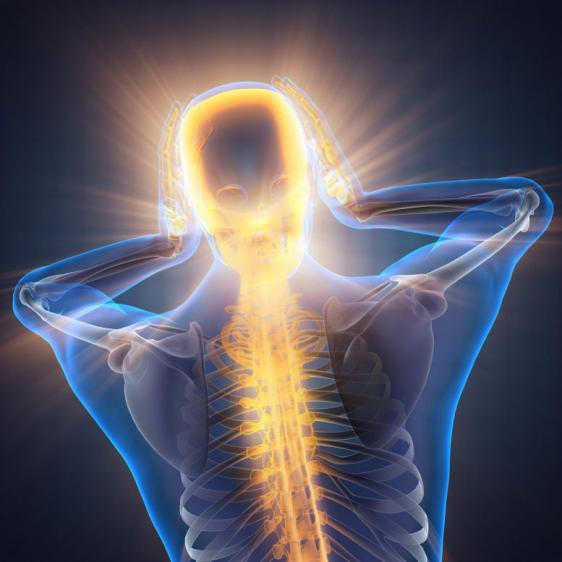博文
神经科学家发现了一种控制疼痛的新方法
 精选
精选
||
神经科学家发现了一种控制疼痛的新方法
诸平
据奥地利维也纳大学(University of Vienna, Vienna, Austria)2025年3月14日提供的消息,自然止痛药?神经科学家发现了一种控制疼痛的新方法(Natural Painkiller? Neuroscientists Discover a New Way To Manage Pain)。
这种效应也发生在虚拟自然中,比如自然视频。(This effect also happens with virtual nature, such as nature videos.)
维也纳大学(University of Vienna)的神经科学家与一个国际团队合作进行的一项新研究发现,体验大自然有助于减轻急性身体疼痛。值得注意的是,即使是观看自然视频也能明显缓解疼痛。
研究人员利用功能性磁共振成像(functional magnetic resonance imaging简称fMRI)观察到,参与者在观看自然景观时,对急性疼痛的评价不那么强烈,也不那么不愉快。这种影响伴随着大脑中与疼痛处理相关区域的活动减少。研究结果表明,以自然为基础的疗法可以作为疼痛管理的有效补充方法。这项研究最近在《自然通讯》(Nature Communications)杂志发表——Maximilian O. Steininger, Mathew P. White, Lukas Lengersdorff, Lei Zhang, Alexander J. Smalley, Simone Kühn, Claus Lamm. Nature exposure induces analgesic effects by acting on nociception-related neural processing. Nature Communications, 2025, 16: 2037. DOI: 10.1038/s41467-025-56870-2. Published: 13 March 2025. https://www.nature.com/articles/s41467-025-56870-2
参与此项研究的除了来自奥地利维也纳大学(Social, Cognitive, and Affective Neuroscience Unit, Department of Cognition, Emotion, and Methods in Psychology, Faculty of Psychology, University of Vienna, Vienna, Austria; Cognitive Science Hub, University of Vienna, Vienna, Austria; Environment and Climate Research Hub, University of Vienna, Vienna, Austria)的研究人员之外,还有来自英国特鲁罗的埃克塞特大学(European Centre for Environment and Human Health, University of Exeter, Truro, UK)、英国伯明翰大学(Centre for Human Brain Health, School of Psychology, University of Birmingham, Birmingham, UK; Institute for Mental Health, School of Psychology, University of Birmingham, Birmingham, UK; Centre for Developmental Science, School of Psychology, University of Birmingham, Birmingham, UK)、德国柏林马克斯·普朗克人类发展研究所(Center for Environmental Neuroscience, Max Planck Institute for Human Development, Berlin, Germany)以及德国汉堡-埃彭多夫大学医学中心(Department of Psychiatry, University Medical Center Hamburg-Eppendorf, Hamburg, Germany)的研究人员。
研究负责人、维也纳大学博士生马克斯·施泰因格(Max Steininger)解释说:“疼痛处理是一种复杂的现象。”为了更好地了解它并确定治疗方案,马克斯·施泰因格和他的同事调查了自然暴露如何影响疼痛:向遭受疼痛的参与者展示三种类型的视频:自然场景,室内场景和城市场景。
研究人员用功能性磁共振成像(fMRI)技术测量参与者的大脑活动,并对疼痛程度进行评估。结果很清楚:当观看自然场景时,参与者不仅报告疼痛减少,而且显示与疼痛处理相关的大脑区域的活动减少。
大自然如何改变大脑活动(How Nature Alters Brain Activity)
通过分析大脑数据,研究人员发现,观看自然会减少大脑在疼痛时接收到的原始感官信号。
“疼痛就像一个拼图,由不同的部分组成,在大脑中以不同的方式处理。这个谜题的一些部分与我们对痛苦的情绪反应有关,比如我们觉得痛苦有多不愉快。其他部分则与痛苦经历背后的生理信号相对应,比如它在体内的位置和强度。安慰剂通常会改变我们对疼痛的情绪反应,而观察自然会改变大脑处理疼痛早期原始感官信号的方式。因此,这种效果似乎较少受到参与者期望的影响,而更多地受到潜在疼痛信号变化的影响,”马克斯·施泰因格解释道。
该研究小组的负责人克劳斯·拉姆(Claus Lamm)补充说:“从另一项正在进行的研究中,我们知道,人们一直报告说,在自然环境中感受到的疼痛更少。然而,其根本原因至今仍不清楚。我们的研究表明,大脑对物质来源(physical source)和疼痛强度的反应都较弱。”
目前的研究提供了关于自然如何帮助减轻疼痛的重要信息,并强调了基于自然的治疗方法可以成为疼痛治疗的有用补充。事实上,仅仅通过观看自然视频就能观察到这种效果,这表明户外散步可能没有必要。视频或虚拟现实等虚拟自然似乎也很有效。这为私人和医疗部门开辟了广泛的应用前景,为人们提供了一种简单易行的减轻疼痛的方法。
该研究得到了奥地利科学基金{Austrian Science Fund (FWF) “DK Cognition and Communication 2”: W1262-B29 [10.55776/W1262]}、“莉泽·迈特纳奖学金”{"Lise Meitner Fellowship": M3166 [10.55776/M3166]}、“健康和疾病中的神经元回路”基金{"Neuronal circuits in health and disease" grant: COE16 [10.55776/COE16]}、欧盟地平线欧洲研究和创新计划{EU’s Horizon Europe research and innovation programme under grant agreement No. 101081420 (RESONATE)}以及威康信托基金{Wellcome Trust (228268/Z/23/Z)}的资助。
上述介绍仅供参考,欲了解更多信息敬请注意浏览原文和相关报道。
Nature exposure has numerous health benefits and might reduce self-reported acute pain. Given the multi-faceted and subjective quality of pain and methodological limitations of prior research, it is unclear whether the evidence indicates genuine analgesic effects or results from domain-general effects and subjective reporting biases. This preregistered neuroimaging study investigates how nature modulates nociception-related and domain-general brain responses to acute pain. Healthy participants (N=49) receiving electrical shocks report lower pain when exposed to virtual nature compared to matched urban or indoor control settings. Multi-voxel signatures of pain-related brain activation patterns demonstrate that this subjective analgesic effect is associated with reductions in nociception-related rather than domain-general cognitive-emotional neural pain processing. Preregistered region-of-interest analyses corroborate these results, highlighting reduced activation of areas connected to somatosensory aspects of pain processing (thalamus, secondary somatosensory cortex, and posterior insula). These findings demonstrate that virtual nature exposure enables genuine analgesic effects through changes in nociceptive and somatosensory processing, advancing our understanding of how nature may be used to complement non-pharmacological pain treatment. That this analgesic effect can be achieved with easy-to-administer virtual nature exposure has important practical implications and opens novel avenues for research on the precise mechanisms by which nature impacts our mind and brain.
https://blog.sciencenet.cn/blog-212210-1477690.html
上一篇:喝酒可能会增加患癌症的风险
下一篇:科学家破解了清洁能源的自然密码
